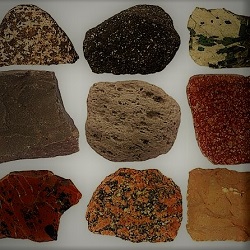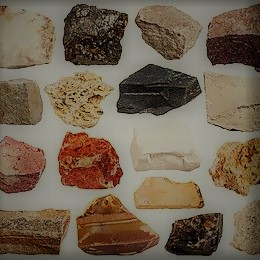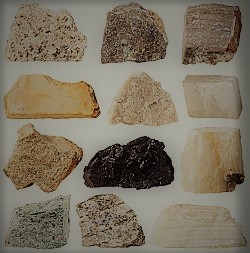THE ROCK
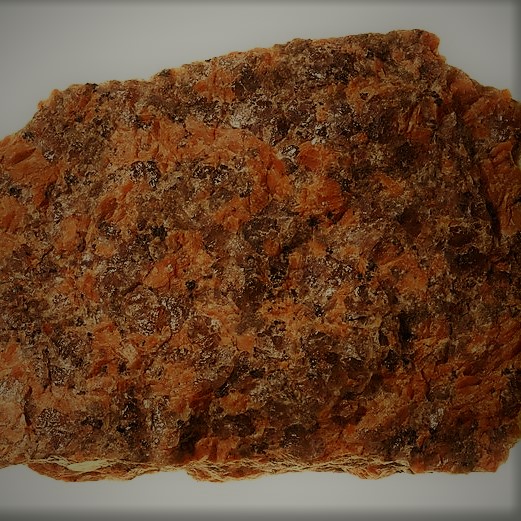
IGNEOUS 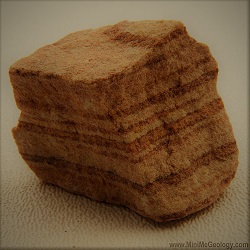
SEDIMENTARY 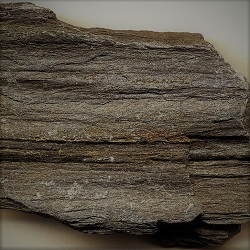
METAMORPHIC 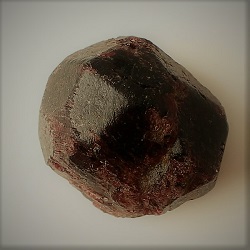
GARNET 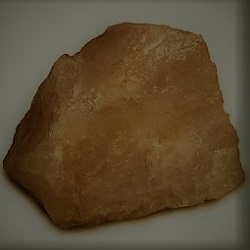
QUARTZ
The rock may be defined as ” An Aggregate Of Minerals Forming, More or Less, A Definite Unit Of The Earth’s Crust“.
COMPOSITION OF THE ROCK
The rock is composed of several minerals. There are 118 elements on earth, 94 of them occur naturally and 6 are in traces. The 8 major rock-forming elements are-
- Oxygen-47%
- Silicon-28%
- Aluminium-8%
- Iron-5%
- Calcium, Sodium, Magnesium, Potassium and Magnesium
There are around 5000 minerals, majority of rocks are formed from combinations of these minerals. They are called Rock-forming Minerals. The important rock-forming minerals are-
- Feldspars, Garnet
- Quartz, Calcite
- Amphiboles, Pyroxenes
- Micas
- Olivine
CLASSIFICATION OF ROCKS BASED ON FORMATION
On the basis of formation, there are three types of rocks-
- Igneous
- Sedimentary
- Metamorphic
igneous rocks are formed due to cooling, solidification and crystallization of the hot molten magma. The magma is found beneath the earth’s crust. In Igneous rock granules and crystals are found due to cooling of the magma. The more it cools, large crystals are formed. This leads to the formation of hard crystalline Igneous rocks. The Igneous rocks are also known as ” the Basic or Primary” rocks. They are so-called because it was the first rock to be formed and act as a supplier of raw materials for the other rocks. layering is absent, no fossils are found in the Igneous rocks. These rocks are least affected by the weathering. 90% of the crust is made of Igneous rocks.
CLASSIFICATION OF IGNEOUS ROCKS BASED ON STRUCTURE AND OCCURRENCE
The igneous rocks are of two types on the basis of occurrence and structure-
- Intrusive- The hot and molten magma solidifies below the earth crust, it gives rise to Intrusive Igneous Rocks. These rocks are of two types-
- Plutonic Igneous Rocks– The rocks are named after Greek god ‘ ‘Pluto”. The rocks are formed due to the cooling of the magma in shallow depth beneath the earth crust. The process of cooling is very slow. This results in the formation of the large granules. The best example is Granite.
- Hypobyssal Igneous Rocks– These rocks are formed due to cooling and the solidification of the rising magma during a volcanic eruption. The magma gets filled in the cracks, pores and other hollow spaces. By the process of erosion, these rocks get exposed. The best examples are the Dolerite and the Magnetite.
- Extrusive– The volcanic rocks. These rocks are formed due to cooling and solidification of the hot and molten lava at the surface of the earth. The granules of the rock are very small. The best example is the Basalt.
The Sedimentary Rocks– The sedimentary rocks are also known as Derived Rocks. They are also known as Stratified or Layered rocks. These rocks are formed on the earth crust due to deposition and erosion of the Igneous and the Metamorphic rocks. These rocks have fossils. Examples– Sandstone, Conglomerates, Clay rocks, Shale and Loess, Limestone, Coal, Peat, Chalk, Gypsum and Salt rocks.
VARIOUS STAGES IN THE FORMATION OF THE SEDIMENTARY ROCKS
- Weathering– Weathering of Igneous, Metamorphic or Sedimentary rocks.
- Transportation– River, Glacier or Groundwater.
- Lithification– The lithification is the process in which under the pressure the sediments turns into hard rock layers.
- Cementation– The cementation is the process of hardening of the sediments by the precipitation of minerals in the pore space with the help of water.
CLASSIFICATION OF THE SEDIMENTARY ROCKS
- Classification Based On Origin–
- Detrital or Clastic Sediments– Made up of fragments of minerals. (Clastic Means– Rocks composed of fragments of the older rocks)
- Biogenic And Chemical Or Non- Clastic Sediments– As a result of chemical precipitation or evaporation from sea.
- Classification Based On Grain Size–
- Rudaceous Sediments– Grain size >2 mm in diameter.
- Arenaceous Sediments– Grain size 0.06-2mm in diameter.
- Argillaceous Sediments– Grain size < 0.06mm in diameter.
- Classification Based On Composition–
- Calcite– A white or colourless mineral consisting of calcium carbonate. It is a major constituent of sedimentary rocks.
- Clay– A finely-grained natural rock or soil.
- Quartz– A hard mineral consisting of silica.
The Metamorphic Rocks– The word Metamorphic is a Greek word. Meta means Change and Morphic means- form. The metamorphic rocks are formed due to transformation (metamorphosed) of the Igneous and Sedimentary under great temperature and high pressure. So the new rock formed is called a metamorphic rock. There is a complete alteration in the appearance and constitution of the pre-existing rocks. This means that the metamorphic rocks are chemically and physically different from the parent rocks.
TYPES OF METAMORPHIC ROCKS
- Metamorphic Rocks Formed Through Igneous Rocks–
- Gneisses From Granite.
- Amphibolites From Basalt.
- Schist From Basalt.
- Metamorphic Rocks Formed Through Sedimentary Rocks–
- Slate From Shale.
- Marble From Limestone.
- Quartzite From Sandstone And Conglomerate.
- Metamorphic Rocks Formed Through Metamorphic Rocks–
- Phyllite From slate.
- Schist From Phyllite.
- Serpentine From Gabbro.

